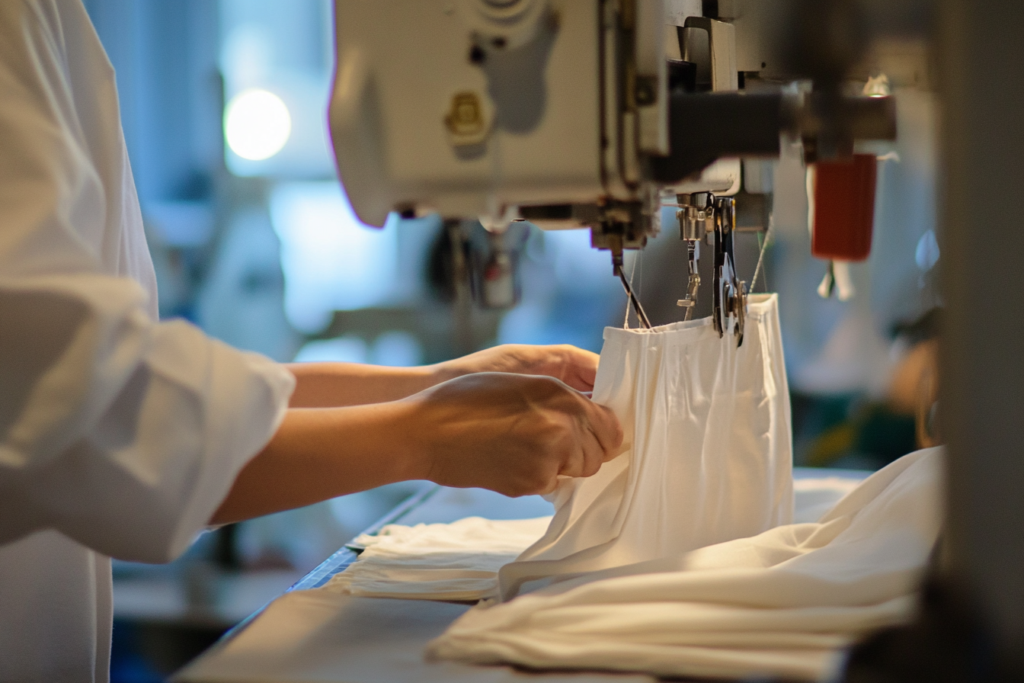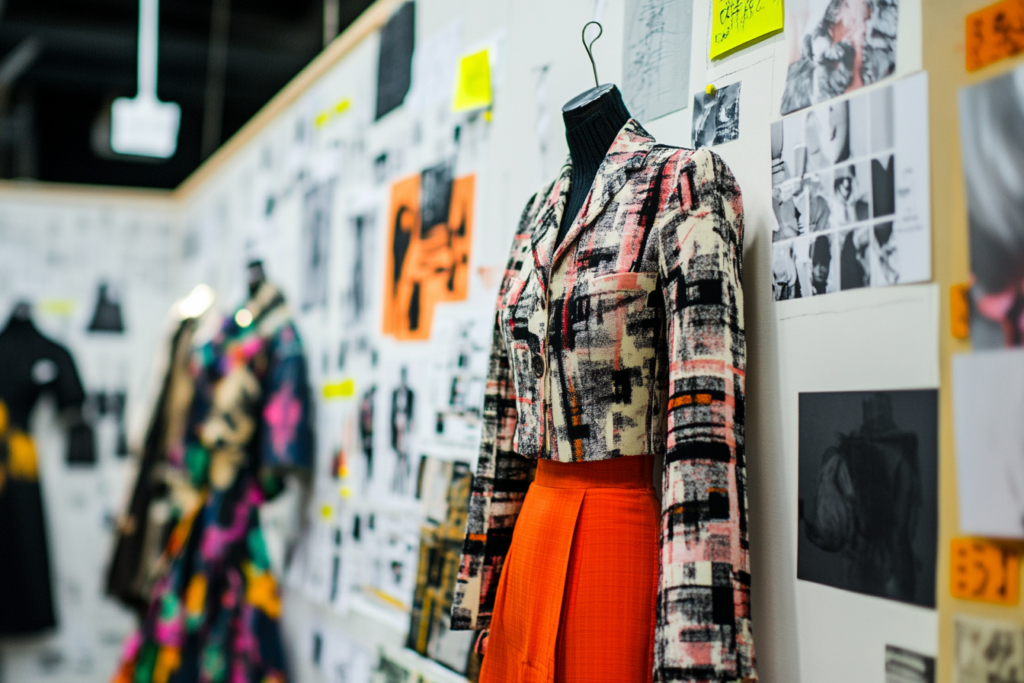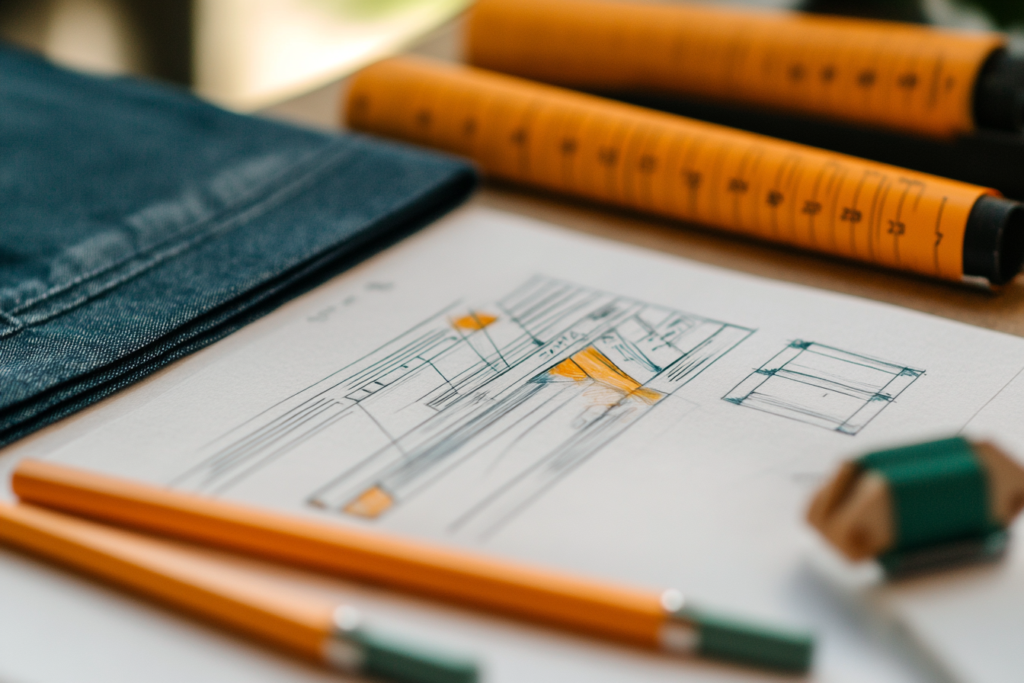Making Samples in the Fashion Design Process: The Bridge Between Design and Production
The process of making samples is a pivotal step in fashion design, turning concepts and technical drawings into tangible garments. These samples provide designers and manufacturers the opportunity to evaluate designs, make adjustments, and ensure that the final product aligns with the brand’s vision. This stage involves not only crafting the garment but also meticulously tracking and labeling each sample to ensure that it meets quality standards and is ready for mass production.
In this article, we’ll dive into the key aspects of making samples, the importance of sample labeling, and how designers and manufacturers communicate to refine garments before the final product is created.
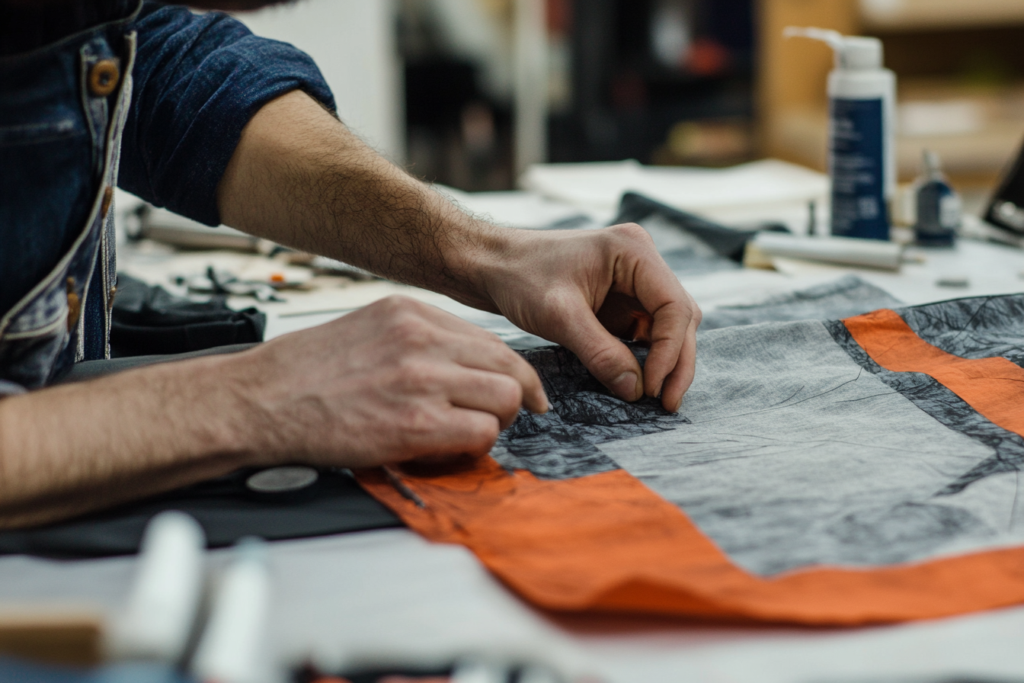
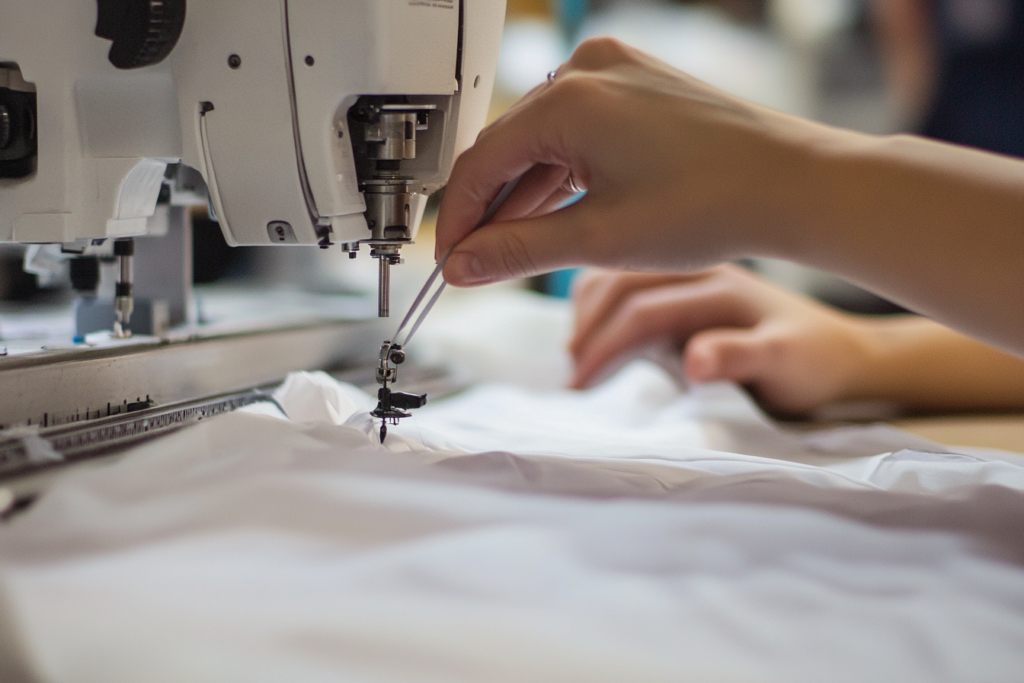
What is Sample Making in Fashion?
Sample making is the process of creating prototypes or first versions of a garment based on the designer’s sketches and technical specifications. These initial samples are then reviewed, tested, and adjusted before mass production begins. Sample making involves collaboration between designers, pattern makers, and manufacturers to ensure the garment is created with the right fit, fabric, and design details.
The main goals of sample making include:
- Testing fit and structure
- Evaluating fabric choices and construction methods
- Refining design details such as stitching, pleats, and trims
- Ensuring quality control before full-scale production
| Step in Sample Making | Description | Icon |
|---|---|---|
| Pattern Development | Translating the designer’s sketch into a working pattern that can be used to create the garment. | 🧵 |
| Fabric Selection | Choosing the appropriate fabric based on texture, drape, and style requirements. | 🎨 |
| Sample Creation | Creating the first sample garment based on the design and pattern specifications. | 👗 |
| Fit Testing | Trying the sample on a model to assess fit, comfort, and styling accuracy. | 🧍♀️ |
| Sample Evaluation | Reviewing the sample to ensure all aspects of design and construction are correct. | ✅ |
Sample Labeling: Ensuring Accuracy in Production
Sample labeling is an essential aspect of the sample-making process, as it helps track the status of each sample and provides key information for designers, product managers, and manufacturers. Proper labeling ensures that every sample is tracked accurately throughout the production process, making it easier to make revisions and ensure the final garment matches expectations.
Key Information in Sample Labels:
- Sample Delivery Date: The date the sample was received by the design team.
- Unique Identification Number: Each sample is assigned a unique ID for tracking and record-keeping.
- Style Number: A systemized number that integrates essential information about the garment (e.g., MWT1770 for a Missy Woven Top).
- Sample Identity: Identifying which version the sample is (Prototype 1, Prototype 2, etc.).
- Type Name and Product Category: Specifies the category, such as women’s workwear or casual wear.
- Agent and Factory Name: Identifies the agent or manufacturer producing the sample.
- Selling Season: Identifies the season the garment is intended for (Spring, Summer, Fall, Holiday).
- Color and Code: Details the color(s) and the color codes used in the garment.
- Fabric and Composition: Specifies fabric types, fiber content, and fabric suppliers.
- Yarn Details: If applicable, specifies yarn weight, especially for knitted garments like sweaters.
- Substitutes: Notes any missing parts or accessories that were substituted during sample production.
| Sample Label Information | Description | Icon |
|---|---|---|
| Sample Delivery Date | The date when the sample was delivered to the designer for review. | 📅 |
| Unique Sample ID | Each sample is given an identification number for tracking purposes. | 🔢 |
| Style Number | A systemized number indicating the specific design and product details. | 🧷 |
| Fabric and Composition | Specifies the fabric type, fiber content, and fabric supplier. | 🧵 |
| Selling Season | Identifies the season the garment is intended for (e.g., Spring, Summer). | 🌞 |
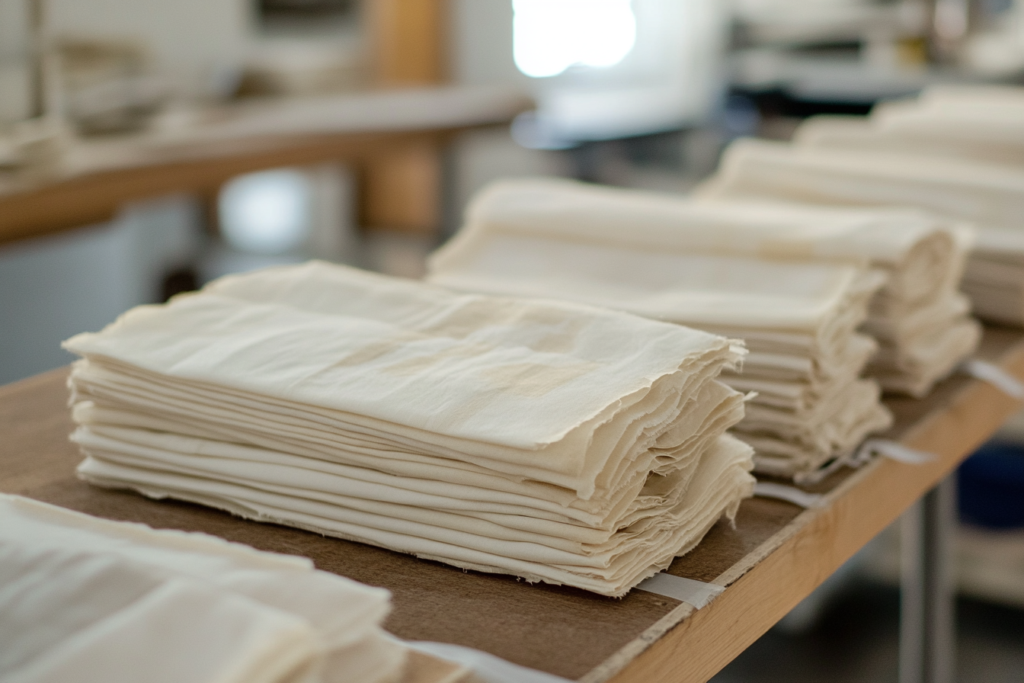
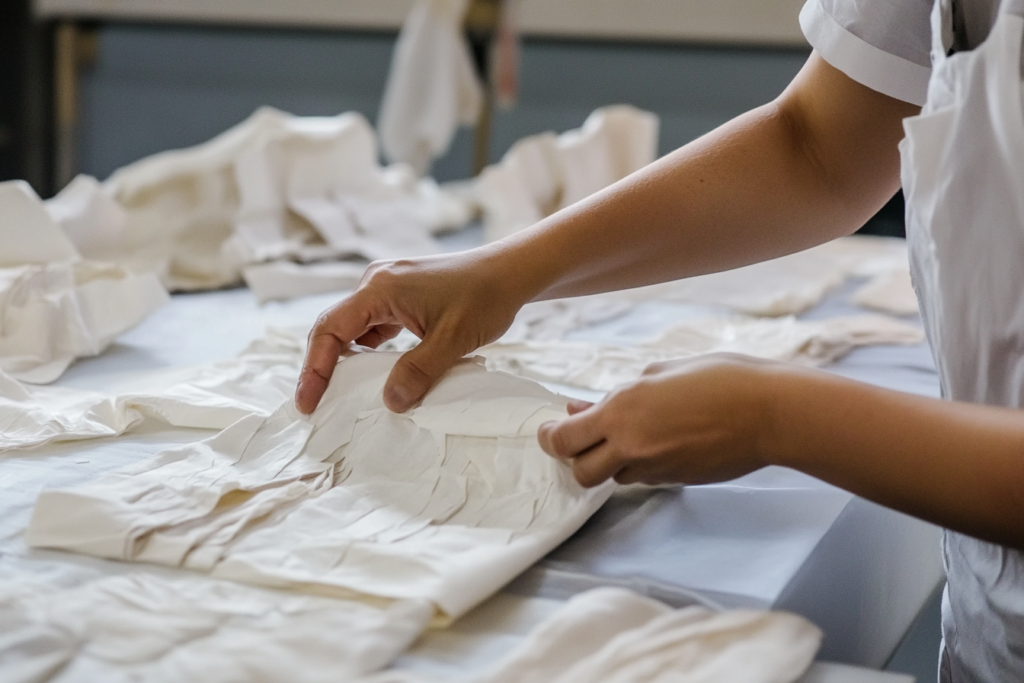
Sample Sizes: Ensuring Fit and Consistency
Sample sizes are another crucial aspect of the sample-making process. Designers typically start by creating a sample in a standard size, such as Medium (M) for women or Large (L) for men, and later scale the sample to different sizes. Fit evaluations are conducted to ensure the garment fits the target customer and maintains consistent sizing across all variations.
Sample Sizes for Women:
- Standard Sizes: 4, 6, 8, 10, 12, 14, 16
- Representative Sizes: 4, 8, 12, 16
In some cases, such as for slim-fitting garments, designers may adjust the pocket sizes or other details based on the size of the garment. For example, patch pockets on a jacket may be the same size across all samples, but lower pockets might be scaled to maintain visual balance for larger sizes.
| Sample Size | Description | Icon |
|---|---|---|
| Size 4-16 | Standard women’s sizing range, with sizes varying based on body proportions and fit. | 📏 |
| Representative Sizes | Specific sample sizes (4, 8, 12, 16) used to evaluate the overall fit and structure of the garment. | 👚 |
| Slim Fit | Fitted styles that require special attention to pocket size, dart placement, and other garment details. | 🧵 |
Evaluating and Approving Samples
Once the sample has been created, it undergoes evaluation for fit and quality. This step is essential to ensure that the garment is not only aesthetically pleasing but also comfortable and functional for the intended wearer. After evaluation, designers will typically request revisions or approve the sample for full production.
The final sample is a critical reference point for mass production, and any errors or missteps during this stage can lead to costly delays or production errors.
| Evaluation Stage | Description | Icon |
|---|---|---|
| Fit Evaluation | Ensuring that the sample fits correctly and meets design expectations. | 🧍♀️ |
| Quality Check | Inspecting the sample for any defects in stitching, fabric quality, and construction. | 🔍 |
| Revisions or Approval | Providing feedback for necessary changes or approving the sample for production. | ✔️ |
The Critical Role of Samples in Fashion Design
Making samples is a pivotal part of the fashion design process, serving as the first tangible representation of a designer’s concept. From the initial prototype to the final production sample, each iteration is carefully evaluated to ensure the garment meets the brand’s standards. Proper sample labeling, size evaluations, and communication with the manufacturer are essential to creating a successful product that resonates with consumers.
By ensuring the quality and accuracy of samples, designers can streamline the development process, reduce costly mistakes, and bring a cohesive and high-quality collection to market.
